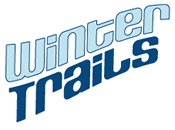.JPG)
Perhaps the main factor that prevents people from enjoying the outdoors in the wintertime is the cold. Feeling cold is extremely uncomfortable- but just throwing on a coat doesn't make you dressed for the weather! If you dress correctly, you might not even notice the chilly temps, and remember that snowshoeing and cross-country skiing are great aerobic activities that will warm you up..and have you breaking a sweat in no time.
Here's a quick guide of how to layer up for the weather:
Wicking layer: This is the layer worn next to the skin. Look for thermal underwear made of a synthetic fiber that has "wicking" power. As participants perspire, the fibers will wick (move) moisture away from the skin and pass it through the fabric so it can evaporate.
Even though it's cold, snow sports will make participants sweat — especially if they are cross-country skiing or snowshoeing. This is why the wicking layer is very important.
Insulating layer: This middle layer includes sweaters, sweatshirts, vests and pullovers. The purpose of this layer is to keep heat in and cold out, which is accomplished by trapping air between the fibers. Popular insulation materials include fleece and wool.
Protection layer: The exterior layer serves as the guard against the elements of winter. It should repel moisture from snow, sleet or rain; block the wind, and let perspiration escape to the outside to evaporate. Some jackets and pants are shells (no insulation), some include built-in insulation, and others have zip-in insulation layers. Choose your protection layer based on temperatures and snow conditions in your area or where you like to vacation.
Headwear: Up to 60 percent of the body's heat can escape from an uncovered head-- so don't forget your hat!
Sunglasses and goggles: Snow, because it is a reflective surface, makes ultraviolet (UV) rays stronger. On sunny days, sunglasses are essential to protect the eyes. On flat-light days or when it's snowing, goggles are vital.
Gloves and mittens: Look for gloves and mittens that use waterproof/breathable fabrics. Mittens, in general, are warmer than gloves, but offer less dexterity. Consider the type of activity when choosing between gloves and mittens. Gloves for cross-country skiing tend to be lighter-weight to allow for extra movement and a higher degree of perspiration.
Socks: One pair of lightweight or medium weight socks works best. Socks are made from a variety of materials, including polyester, silk and wool. Socks designed specifically for snow sports have wicking properties similar to thermal underwear, meaning your feet will stay drier and more comfortable.
For more information, check out our website
here.








.JPG) Perhaps the main factor that prevents people from enjoying the outdoors in the wintertime is the cold. Feeling cold is extremely uncomfortable- but just throwing on a coat doesn't make you dressed for the weather! If you dress correctly, you might not even notice the chilly temps, and remember that snowshoeing and cross-country skiing are great aerobic activities that will warm you up..and have you breaking a sweat in no time.
Perhaps the main factor that prevents people from enjoying the outdoors in the wintertime is the cold. Feeling cold is extremely uncomfortable- but just throwing on a coat doesn't make you dressed for the weather! If you dress correctly, you might not even notice the chilly temps, and remember that snowshoeing and cross-country skiing are great aerobic activities that will warm you up..and have you breaking a sweat in no time..JPG)
